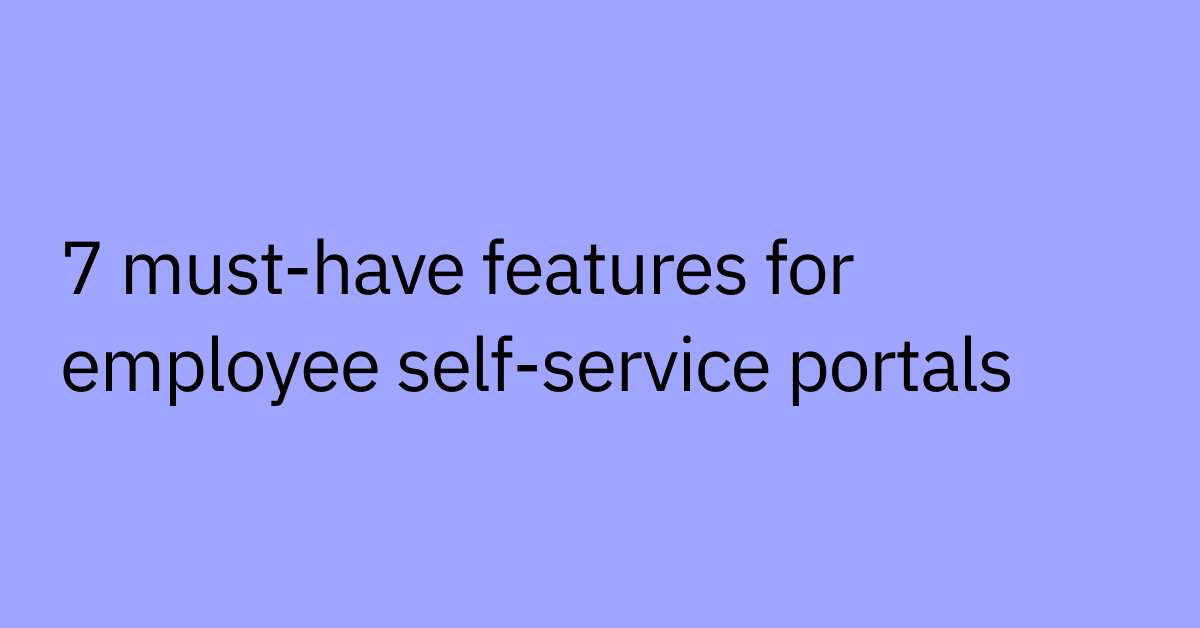Table of contents
The promise of AI has never been more enticing. With the rapid evolution of powerful tools like copilots, organizations are eager to harness the transformative potential of these technologies. However, the true secret to unlocking AI's value lies not only in the tools themselves, but in their successful adoption across the enterprise.
Far too often, companies find that even their most sophisticated AI solutions remain severely underutilized, as employees struggle to embrace and integrate these tools into their daily workflows. The result is a significant disconnect between the investment in AI and the realization of its benefits — a problem that can no longer be ignored.
Today, we'll explore a proven, step-by-step approach to building an AI adoption strategy that empowers your people, drives measurable business impact, and positions your organization as an industry leader. By the end, you'll have the insights and actionable strategies needed to overcome the common barriers to AI adoption and cultivate a culture where AI is seamlessly woven into the fabric of your operations.
What you'll learn:
- Why AI adoption matters
- Common barriers to adoption
- How to cultivate an AI-ready culture with leadership buy-in.
- Best practices for effective training and boosting user adoption.
- Techniques for designing user-friendly AI experiences
- AI's business impact through real implementations
Learn how existing enterprises are growing user engagement and expanding AI across their organization. Watch Moveworks.global on demand.
What is AI adoption and why does it matter?
The process of AI adoption refers to the strategic and systematic implementation of AI-powered solutions to drive business optimization, enhance decision-making, and unlock new avenues for innovation.
The adoption of AI matters because it empowers organizations to work smarter, not harder. By leveraging the pattern recognition, predictive analytics, and autonomous decision-making capabilities of AI, businesses can automate repetitive tasks, personalize customer experiences, and uncover data-driven insights that would have otherwise remained hidden. AI not only boosts productivity and efficiency but also frees up valuable human resources to focus on higher-level, strategic initiatives.
Moreover, AI adoption enables organizations to stay competitive in rapidly evolving markets. Early adopters of AI-powered technologies often gain a significant advantage over their peers, as they are better equipped to adapt to changing customer demands, identify emerging trends, and seize new opportunities before the competition. This agility and responsiveness are essential in today's fast-paced, digitally-driven business landscape.
Common barriers to AI adoption
By addressing the common barriers listed below and fostering a culture of AI-driven innovation, organizations can access the full transformative potential of these powerful technologies and position themselves for long-term success.
Lack of training and onboarding
Without comprehensive training and ongoing support, workers may feel overwhelmed or apprehensive about incorporating new AI capabilities into their workflows. Providing thorough onboarding and continuous learning opportunities can help employees overcome this barrier and feel confident in leveraging AI tools.
Resistance to change and skepticism
Employees accustomed to traditional methods may be hesitant to embrace new technologies, fearing AI will replace their roles or add unnecessary complexity. Addressing these concerns through clear communication, highlighting the benefits, and involving employees in the implementation process can help mitigate resistance to change.
Poor user experience and complexity
If the AI tools are not user-friendly and seamlessly integrated into existing workflows, employees may be less inclined to adopt them. Focusing on designing intuitive, frictionless user experiences and providing adequate support can encourage widespread adoption.
Inadequate communication and awareness
Proactively informing and engaging employees about AI initiatives and available resources is crucial. If workers are unaware of the organization's AI efforts and the opportunities to leverage these technologies, adoption will be hindered. Effective communication and awareness-building campaigns can help overcome this barrier.
Inflexible "toolkit" approach
A one-size-fits-all AI "toolkit" approach often falls short in addressing the unique needs of each business unit or department, limiting overall effectiveness. To drive more impactful adoption, organizations should prioritize a flexible, customizable strategy that tailors AI solutions to the distinct challenges and workflows of individual teams. The more robust and expansive the AI's capabilities, the more likely users will be to adopt and integrate it into their daily activities. By embracing this user-centric approach, enterprises can ensure the technology seamlessly aligns with the nuances of different functions, driving widespread and long-term engagement.
Strategies for driving AI adoption
Building an AI-ready culture requires a holistic approach that addresses both the technological and the human elements of the transformation. Driving AI adoption involves implementing a strategic set of interventions to prepare the organization and its people. In this section, I’ll provide a list of key strategies to consider:
Change management and culture shift
Driving successful AI adoption within an organization requires a multi-faceted approach that goes beyond merely implementing the technology. It demands a concerted effort to build an organizational culture that is receptive and responsive to the transformative power of artificial intelligence.
To drive change management and culture shift when adopting AI, focus on:
- Securing executive sponsorship and leadership buy-in
- Addressing employee fears and concerns through transparent governance
- Celebrating early wins and sharing success stories
Secure executive sponsorship and leadership buy-in
At the heart of this cultural shift lies the critical role of executive sponsorship and leadership buy-in. Without the unwavering support and commitment from the C-suite and other key leaders, AI adoption efforts are likely to falter. Executive sponsors can champion the AI initiative, secure the necessary resources, and set the tone for a culture of innovation throughout the organization.
Address employee fears and concerns through transparent governance
However, fostering an AI-ready culture is not without its challenges. Employees may harbor concerns about the impact of AI on their roles, job security, and the potential for bias or privacy violations. Proactively addressing these fears through open communication and transparent governance is essential.
By establishing clear policies, guidelines, and processes for the ethical and responsible use of AI, organizations can assure their workforce that AI is being deployed in a fair and secure manner. Defining accountability measures, data privacy protocols, and algorithmic fairness standards can help alleviate employee apprehensions and build trust..
Celebrate early wins and sharing success stories
Equally important is the celebration of early wins and the sharing of success stories. Showcasing the tangible benefits and positive outcomes of AI adoption can inspire enthusiasm and foster a culture of innovation. By highlighting efficiency gains, improved decision-making, and the contributions of AI-empowered employees, organizations can motivate wider adoption and sustain the momentum of their AI transformation journey.
Training and education
Driving successful AI adoption within an organization requires a comprehensive approach to training and education that includes:
- Comprehensive onboarding programs
- Ongoing training and support resources
- User-friendly documentation and guides
Establish comprehensive onboarding programs
Effective AI adoption begins with thorough onboarding programs that address the unique needs of both new and existing employees. For new hires, the onboarding process should provide a comprehensive introduction to the AI tools and capabilities, ensuring they are equipped to leverage the technology from day one.
For existing employees, the onboarding strategy may need to focus more on change management and overcoming resistance to new ways of working. In this case, personalized training videos from the AI vendor can be a valuable resource, giving employees an engaging overview of the product while tailoring the content to the organization's specific use cases.
Provide ongoing training and support resources
Remember that successful AI adoption is an ongoing journey, requiring a commitment to continuous learning and skill development. Organizations should provide regular training and support resources to help employees constantly update and refine their AI-related skills. This could include webinars, workshops, and access to online learning platforms.
Partnering with the AI vendor's customer success team can also be a strategic move. A true AI partner, such as Moveworks, will work closely with the organization to develop a joint success plan and provide data-driven recommendations to drive continuous impact. This level of support can help ensure employees are able to maximize the value of the AI tools and maintain high levels of adoption over time.
Leverage user-friendly documentation and guides
Finally, to further support AI adoption, organizations can lean on comprehensive, user-friendly documentation and guides that should be provided by their AI vendor. These resources should cover everything from basic platform navigation to advanced use cases, empowering employees to quickly find the information they need to become proficient with the AI tools.
By prioritizing training and education, organizations can equip their workforce to embrace the transformative potential of AI, driving sustained adoption and unlocking the full benefits of these powerful technologies.
Run issue-driven communications campaigns
Ineffective communication around new tools and processes can seriously undermine adoption efforts. In fact, research shows companies can lose between $11,000 to $15,000 per employee annually due to communication-related issues.
While general campaigns to encourage overall AI adoption can be helpful, a more targeted approach can be even more impactful. By focusing on specific subsets of users who are underutilizing the AI capabilities or frequently contacting the service desk for issues the AI could have resolved, organizations can drive more meaningful adoption.
These tailored campaigns involve building a targeted recipient list and sending a message based on the user's relevant recent activity or pain points. This contrasts with broader, generic adoption campaigns sent to all employees.
By addressing specific user needs and challenges, issue-driven communications can be a powerful strategy for driving increased AI utilization. In fact, our team at Moveworks has found that sending targeted comms through the copilot itself not only informs users, but also boosts adoption of the AI overall.
Instead of a one-size-fits-all approach, issue-driven campaigns allow organizations to curate the right message for the right user at the right time. This level of personalization can be the difference between token engagement and sustainable, organization-wide adoption of the AI tool.
Incentives and motivation
Fostering widespread AI adoption within an organization requires more than just comprehensive training and education — it also necessitates a strategic approach to incentives and motivation. Key elements of this approach include:
- Gamification and rewards
- Adjusting support flows
- Performance metrics and accountability
- Incorporating AI adoption into performance evaluations
Explore gamification and rewards
To drive employee engagement and enthusiasm for AI adoption, organizations should consider incorporating gamification elements and reward systems. These programs could involve encouraging staff to come up with creative, team-based projects that leverage the information and capabilities of the AI tools. For example, teams could be challenged to produce poems or other creative content using the data and insights provided by the AI system.
Initiatives like these not only generate excitement and a sense of friendly competition, but they also showcase the innovative potential of the technology. By empowering employees to explore the boundaries of what's possible, organizations can cultivate a culture of AI-driven innovation. Plus, a little bit of creativity and fun can go a long way.
Adjust support flows
Organizations can also leverage subtle nudges to drive AI adoption, such as adjusting support flows to gently encourage users to leverage the AI-powered tools, such as a copilot, chatbot, or digital assistant, rather than defaulting to traditional channels like email or phone.
By making the AI-driven options the path of least resistance, organizations can gradually shift user behavior and acclimate employees to the new ways of working. This approach helps to normalize the use of AI tools and integrate them seamlessly into the daily workflow.
Establish and share performance metrics for accountability
Establishing clear performance metrics and accountability measures can also be a powerful motivator for AI adoption. By tying the use of AI tools to key business objectives and individual/team performance indicators, organizations can demonstrate the tangible value of these technologies and create a sense of ownership and responsibility among employees.
Incorporate AI adoption into performance evaluations
Going a step further, organizations can consider incorporating AI adoption as a component of employee performance evaluations. This step not only signals the importance of these technologies to the overall business strategy, but it also encourages individuals to proactively seek out ways to leverage AI in their day-to-day work.
By combining these incentives and motivation strategies, organizations can foster a culture of AI-driven innovation, where employees are actively engaged, enthusiastic, and accountable for driving the successful adoption and utilization of these powerful technologies.
User experience and design
Designing a user-friendly and intuitive AI experience is crucial for driving widespread adoption within an organization. Focus on:
- Intuitive and conversational interfaces
- Personalization and customization options
- Seamless integration with existing workflows and tools
Find intuitive and conversational interfaces
Everyone these days is expecting a seamless conversational experience. ChatGPT really changed the game there. One of the keys to successful AI adoption is ensuring the user experience is intuitive and natural. Employees should be able to interact with the AI tools in a conversational manner, mimicking the ease and flow of a human-to-human interaction. Making every interaction a conversation and not a maze of buttons helps to remove any perceived complexity or barriers to usage, making the AI solutions feel like a seamless extension of the user's daily workflow.
Personalize and customize
In addition to a conversational interface, the AI tools should also offer a high degree of personalization and customization. Employees should be able to tailor the experience to their individual needs, preferences, and job responsibilities. This level of personalization not only enhances the user experience, but it also helps to drive deeper engagement and adoption.
Integrate AI into your existing workflows and tools
To further streamline the user experience and drive widespread adoption, AI solutions should integrate seamlessly with the organization's existing workflows and software tools. This approach might involve using generative AI to create fluid yet controlled conversational experiences that search systems, deliver instant answers, initiate workflows, and surface other relevant resources — all without disrupting established processes and using your tools.
By minimizing the need for context switching and disruption to how employees already work, this level of integration can encourage more natural and widespread adoption of the AI technologies. Users won't have to learn new interfaces or navigate away from their familiar tools. Instead, the AI capabilities will simply augment and enhance their existing workflows.
As evidenced by DocuSign's experience with Moveworks, the simplicity of the user experience can be a key differentiator in driving AI adoption. Adonay Mello, a Senior IT Manager at DocuSign, noted, “You don't need to publicize Moveworks that much to gain adoption. People come back to the bot because they like the experience.” By prioritizing intuitive design, personalization, and seamless integration, organizations can create AI solutions that employees genuinely enjoy using and come to rely on in their day-to-day work.
Integrating the AI into the tools and processes employees already rely on is a powerful strategy for increasing utilization and maximizing the technology's impact across the organization. It removes friction and makes the AI a natural, intuitive part of how work gets done.
Measuring the impact of AI adoption
Driving successful AI adoption requires not just implementing the technology, but also demonstrating its tangible business impact. Enterprise customers may have trimmed overall software spending, but they still wasted an average of $18 million on unused applications last year. Similarly, U.S. companies waste a staggering $247 per desktop on software that goes largely unused.
So, it almost goes without saying that as organizations work to drive adoption of a new AI tool, carefully tracking and measuring the impact becomes crucial. Quantifying the success of adoption not only helps justify the AI investment, but also identifies areas for improvement in the adoption strategy itself.
Here are some key metrics to consider:
User engagement metrics
- Percentage of eligible users who have engaged with the AI at least once
- Average number of user engagements, tasks completed, or other interactions with the AI
- Rate of growth in AI usage over time
These metrics provide insights into how widely the AI tool is being adopted and whether usage is increasing as you roll it out. Pay attention to user engagement, as sustained high usage is a sign of successful adoption.
Productivity and efficiency gains
- Reduction in manual effort or processing time for specific tasks
- Decrease in support tickets or service desk inquiries related to the problem the AI solves
- Improved employee productivity and efficiency
- Enhanced employee satisfaction or service levels
Quantifying the tangible business benefits enabled by the AI is key to building a compelling case for continued investment. Look for metrics that tie the AI's impact directly to your organization's key goals and priorities.
Adoption campaign effectiveness
- Engagement rates with communications, training, and change management efforts
- Feedback and sentiment from users about the AI tool
Don't forget to evaluate the impact of your own adoption programs. Measuring how effectively you're driving awareness, education, and user buy-in will help you refine your approach over time.
By tracking this holistic set of adoption and impact metrics, you can demonstrate the AI's value, modify your adoption strategies, identify opportunities for improvement, and ensure your investment is delivering sustainable benefits for the organization.
AI adoption strategy best practices and case studies
Clearly — driving successful AI adoption is a multifaceted endeavor that requires a strategic, holistic approach. While the specific tactics and initiatives may vary across organizations, several leading companies have demonstrated best practices and achieved impressive results through their AI adoption efforts.
Successful AI adoption initiatives
Enterprises across industries have found creative ways to drive widespread adoption of AI tools within their organizations. These real-world examples illustrate the key strategies and best practices that have led to success.
User-friendly experience is paramount to tool engagement
DocuSign's success with their Moveworks AI copilot came from prioritizing the end-user experience before intensive internal marketing efforts. “People come back to the bot because they like the experience,” noted Adonay Mello, Senior IT Manager at DocuSign. By offering a seamless, conversational interface that quickly resolves common IT issues, Moveworks has become a go-to resource, with 9 out of 10 DocuSign employees using the bot regularly.
Adding AI functionality to tools employees already use accelerates adoption
Equinix achieved over 90% adoption of Microsoft Teams and automated several agents' worth of work while accelerating resolution time and raising its Employee Net Promoter Score (eNPS) to 96%. The key was integrating their AI-powered employee support copilot directly into the Teams platform, making it a natural extension of the tools workers already use daily.
Providing AI that proactively surfaces information unlocks productivity
Former CIO Mark Tonnesen of Achieve emphasizes the importance of an AI assistant that “finds things for [employees], rather than making them learn to navigate more menus.” This approach of meeting users where they are, rather than forcing them to adapt to a new interface, has been key to unlocking productivity gains. Employees can quickly get the information and support they need without the typical friction.
Positioning the AI as a valuable service, not just technology, drives adoption
Jamf, the enterprise IT management company, experienced an “impressive adoption rate of 30% within the first month” for its AI-powered support solution. Melissa Dunham, Senior Director of IT Support and Experience, attributes this to "meeting our users where they are and providing a service that they needed” — framing the AI as a helpful resource rather than just another new tool.
Proactive issue resolution and seamless integration promote self-service
Over 90% of Palo Alto Networks' employees use Sheldon, the company's AI copilot, because it proactively solves issues in the shared Slack IT channel, effectively promoting itself and driving widespread adoption. Similarly, Robert Half integrated Moveworks into its Microsoft Teams space, resulting in a 6X increase in Teams’ adoption companywide within just four months, as employees could access the AI's capabilities without leaving their primary productivity platform.
Eliminating friction and language barriers enables self-service at scale
Verisk, the data analytics company, has completely eliminated phone support, as users prefer going to their AI copilot, Vic, which has provided a chat-based interface that eliminates waiting, friction, and language barriers. And Vituity, a healthcare provider, also found success with Moveworks, which CIO Amith Nair describes as “the first solution that actually worked, no matter what channel employees use” — further expanding self-service capabilities.
Lessons learned and key takeaways from these case studies
These success stories highlight several key lessons for organizations embarking on their own AI adoption journeys:
- Focus on delivering a seamless, user-centric experience that meets employees where they are.
- Leverage AI assistants to automate routine tasks and streamline support, freeing up resources for higher-value work.
- Promote the AI tools proactively and make them readily accessible within existing workflows and communication channels.
- Measure and track adoption metrics to continuously improve the employee experience and drive sustained engagement.
By emulating these best practices and learning from the experiences of industry leaders, organizations can unlock the transformative potential of AI and position themselves for long-term success.
Empower your people with AI by making it easy for them to use
Successful AI adoption is not just about launching the technology and hoping for the best — it's about cultivating an organizational culture that embraces the transformative potential of these powerful tools. By addressing common barriers, implementing effective training and education programs, leveraging strategic incentives, and designing user-centric experiences, companies can unlock the true competitive advantage of AI.
A key part of this is ensuring the AI solutions seamlessly integrate into employees' daily workflows and preferred tools. When the technology becomes a natural, intuitive extension of how people already work, it removes friction and encourages widespread, sustained adoption. Users are empowered to leverage the AI's capabilities without disrupting their established processes.
Ultimately, the goal of AI adoption should be to augment and amplify the capabilities of the workforce, not replace them. By making these powerful technologies easy and effortless to use, organizations can free up time and resources, allowing people to focus on more strategic, high-value activities. When done right, AI becomes a force multiplier for human potential, driving innovation, productivity, and long-term success across the enterprise.
Contact Moveworks to learn how AI can supercharge your workforce's productivity.



